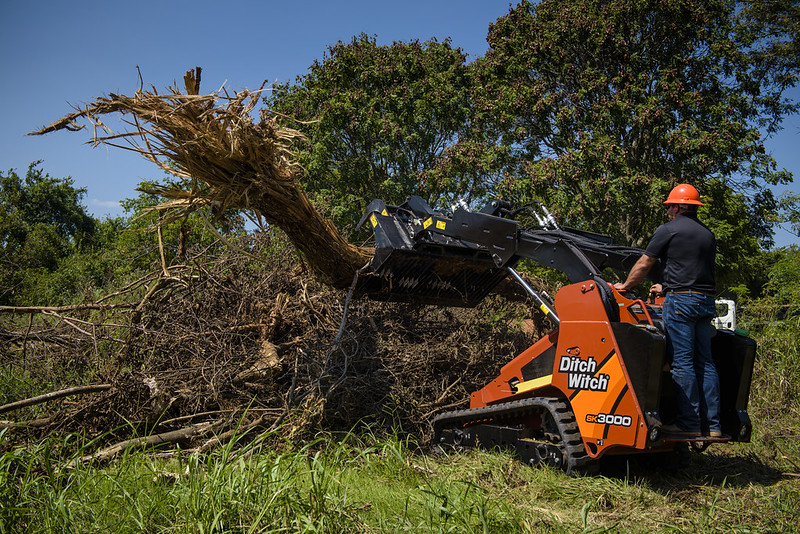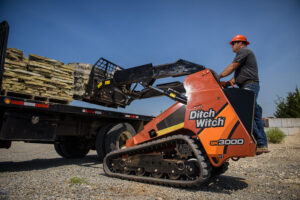Tips for Dealing with a Worker Shortage
By Brant Kukuk

Are you struggling to hire enough workers? Well, you’re not alone. The labor shortage is hitting many industries hard, but the landscape industry in particular is facing an uphill battle to find enough employees to support the demand for work. According to the 2021 Green Industry Benchmark report, attracting and retaining employees is still the most frequently cited issue in the green industry, with more than 70% of landscapers reporting difficulties in finding employees.
While industry leaders and organizations are prioritizing workforce development and looking for solutions to attract more workers over the long term, many landscapers need help now. An easy and immediate step you can take to bolster your crew is to maximize your equipment use. Three tips to ensure you’re getting the most out of your equipment are as follows:
Increase your power, increase your efficiency
There’s a reason the desire for power is on the rise in both construction and landscaping. More power leads to higher efficiency, and in our busy world, higher efficiency saves time and money.
When there is less manpower on a jobsite, powerful equipment is even more important. Machines with more power can support crews by lifting loads that would otherwise require three or four workers. Having a machine on site that can pick up and transport more weight reduces the time spent loading or unloading materials from trucks, ultimately helping move through a project quicker.
With smaller crews and growing demand, many landscapers are taking on two or three different jobs in a day, so machines with more power help them increase efficiency and lead to higher profits. Jeremy Folsom, owner of Folsom Tree Service, Benton, Ark., said that his efficient, safety-focused process harnesses the power of two critical pieces of equipment: a 19-inch-capacity tree chipper and a full-size stand-on skid steer.
“We generally bring only the stand-on skid steer to the jobsite because it has the power to complete all the tasks we need done, and its ability to use attachments just doubles down on that,” said Folsom. “With both the large chipper and the power of the stand-on skid steer, I can lay a 3,000-pound treetop on the ground with my crane, pick it up with the stand-on skid steer, and feed it into the chipper at 5 minutes per pick. The stand-on skid steer helps me give my customers the best, most efficient service possible.”
Easy-to-operate will get you simple productivity
Every job is an all-hands-on-deck endeavor when you’re working with a smaller crew. This means that each employee needs to be knowledgeable and confident in operating every piece of equipment. Whether it’s a crew member who has been on the site one day or someone who has been in the industry for 20 years, everyone needs to be able to hop on a machine and operate it with confidence and efficiency.
One way to help that become a reality is to invest in easy-to-learn and easy-to-operate machines. There are two key factors that landscapers should look at when selecting easy-to-operate equipment. The first is to look for machines that are supported with convenient training tools, whether online, in a classroom or on the jobsite. Simple and available machine training can help ensure that your crew knows how to safely operate equipment while optimizing every feature. It also can help get new employees trained and onto the jobsite quickly.
The second factor is making sure that your equipment has features that help operators safely, quickly and efficiently complete any job. Stand-on skid steers are a great example. The hop-on/hop-off ability of a stand-on machine is very beneficial for smaller crews because it’s easy to transition between operating the machine and helping with manual labor. The open platform also provides a 360-degree view of the jobsite, so operators can confidently work in tight spaces, in both forward and reverse.
Every minute counts on a jobsite, especially when a smaller crew is involved. Making sure equipment is easy to use and easy to learn is an important – and simple – way to improve jobsite productivity.
Versatility will be your new best friend
Versatile machines are growing in popularity with landscapers because they offer the ability to take on multiple different jobs with only one machine by utilizing its different attachments. Additionally, having only one machine on site reduces transportation headaches and prevents unnecessary jobsite congestion.
When landscapers invest in versatile machines, they can take on a variety of jobsite tasks from the same operator platform. For example, an operator can take a single machine on a job to load, dig or move material with a backhoe attachment. They can then switch to a trenching attachment to dig an irrigation line. Afterward, they can attach a bucket to remove the dirt. Lastly, a box rake attachment can be used to restore the ground. Four attachments, four tasks complete, just one machine and one operator.
Having one machine on site also helps streamline jobsite cleanup and reduce maintenance needs. This allows landscapers to stay focused on the job at hand, not occupied with downtime. Not to mention, the ability to use a single machine on site reduces training time because operators only need to know how to use one machine.
Darrel Anderson, owner and CEO of D2Scapes, a landscape company based in Hot Springs, Arkansas, credits the versatility of stand-on skid steers for allowing his crew to take on two separate residential landscaping projects at one time.
“Being able to easily switch attachments is key to helping us accomplish a variety of jobs with just the one machine,” Anderson said. “Since many of our jobs are in residential areas that already have multiple vehicles taking up jobsite space, the ability to use only one machine a jobsite is a huge plus. In the future, I definitely plan to continue looking into new attachments that can help my crew take on new jobs. I believe that will be the future of how we work.”
If you’re struggling with a worker shortage, relying on your equipment is one of the best, most immediate steps you can take to support your jobsite needs. By investing in powerful, easy-to-operate and versatile machines, you can operate efficiently and stay profitable.
Brant Kukuk is compact equipment product manager at Ditch Witch. In this role, Kukuk oversees the growing compact equipment market for Ditch Witch, including stand-on skid steers and attachments, walk-behind trenchers and various other equipment. He works to ensure that Ditch Witch can meet the quickly evolving needs of the construction, rental, landscape and hardscape industries, among others. Kukuk has previously led design and development of several compact equipment products and worked as an engineer at IC Bus of Oklahoma and Fluid Engineering Services in Oklahoma. Kukuk graduated from Oklahoma State University with a Bachelor of Science degree in Mechanical Engineering. For additional information, visit www.ditchwitch.com.



